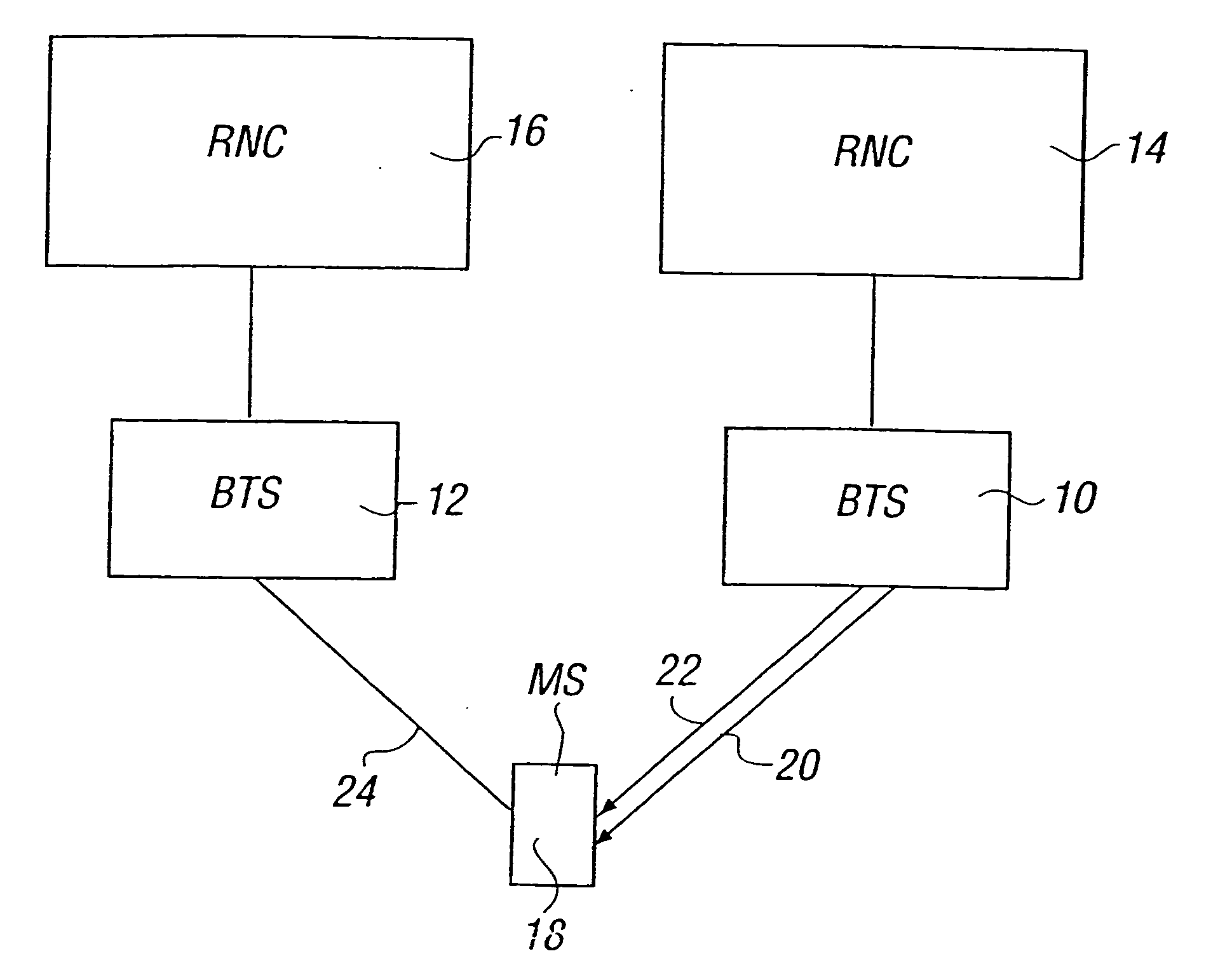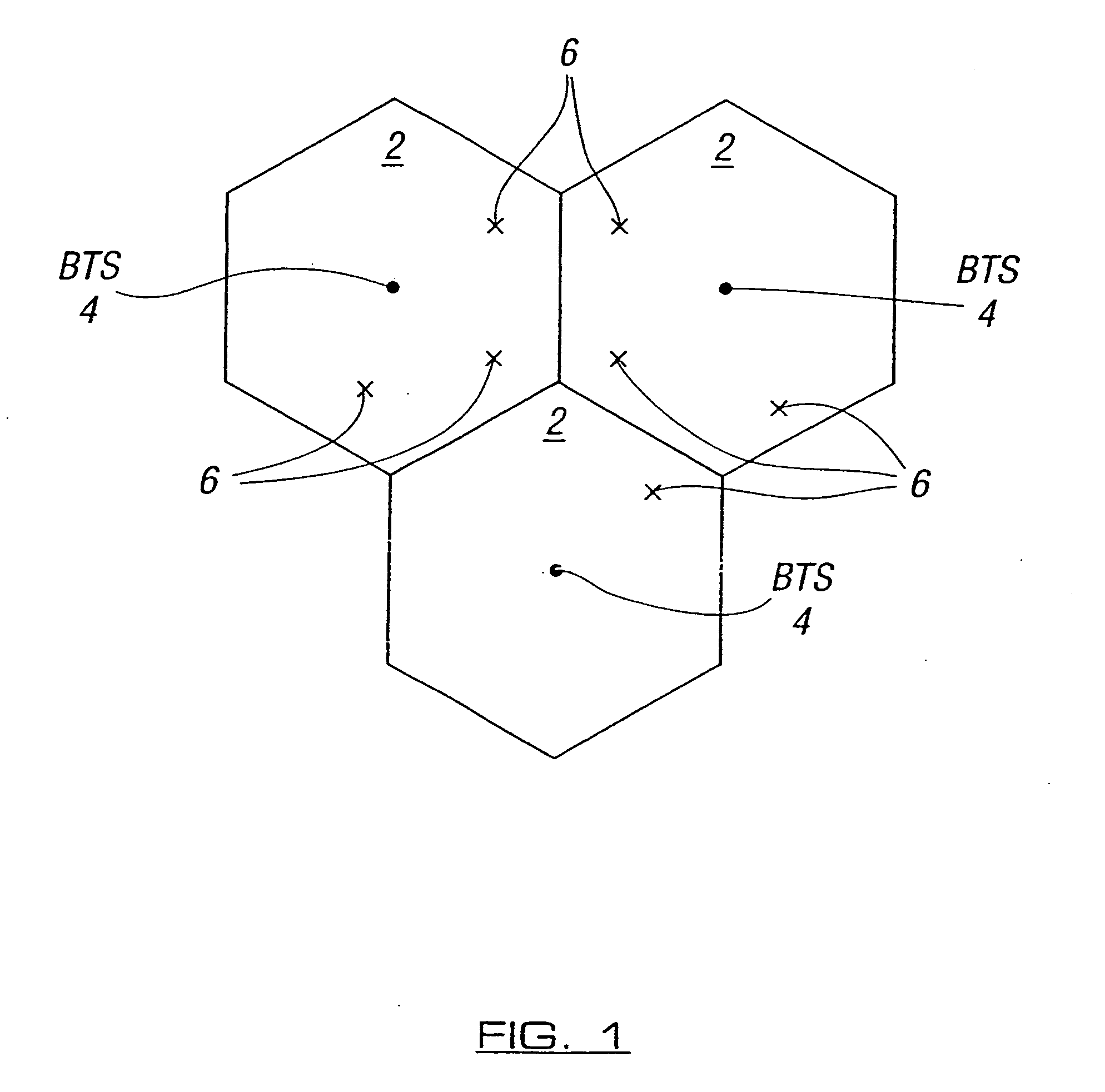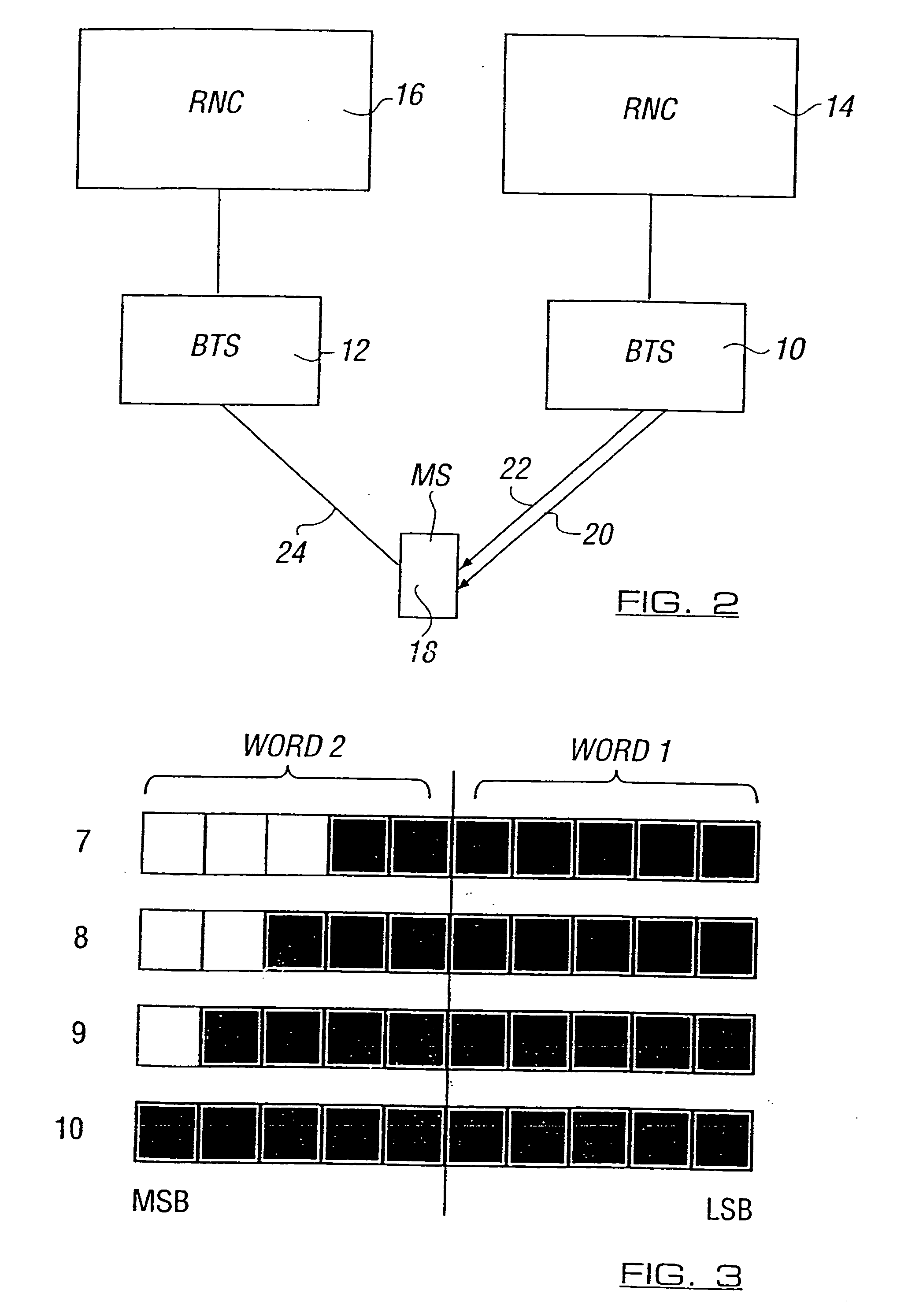Method for transmitting signals from a plurality of base stations to a mobile station
a mobile station and base station technology, applied in multiplex communication, wireless communication, site diversity, etc., can solve the problems of mobile station not being able to successfully combine the received speech, mobile station is not able to successfully implement the use of soft handoff with data, and mobile station is not able to achieve the effect of receiving speech
- Summary
- Abstract
- Description
- Claims
- Application Information
AI Technical Summary
Problems solved by technology
Method used
Image
Examples
Embodiment Construction
[0030] Reference will first be made to FIG. 1 in which three cells 2 of a cellular telecommunications network are shown. Each cell 2 is served by a respective base transceiver station (BTS) 4. Each base transceiver station 4 is arranged to transmit signals to and receive signals from the mobile stations 6 located in the cell associated with the given base transceiver station 4. Likewise, each mobile station 6 is able to transmit signals to and receive signals from the respective base transceiver station 4.
[0031] The cellular telecommunications network shown in FIG. 1 uses a code division multiple access technique. Accordingly, at least some of the mobile stations will be in communication with more than one base station at the same time. This, however, will be described in more detail hereinafter.
[0032] Reference is now made to FIG. 2 which shows two base stations 10 and 12 which serve adjacent cells. The first base station 10 is connected to a first radio network controller 14 whi...
PUM
 Login to view more
Login to view more Abstract
Description
Claims
Application Information
 Login to view more
Login to view more - R&D Engineer
- R&D Manager
- IP Professional
- Industry Leading Data Capabilities
- Powerful AI technology
- Patent DNA Extraction
Browse by: Latest US Patents, China's latest patents, Technical Efficacy Thesaurus, Application Domain, Technology Topic.
© 2024 PatSnap. All rights reserved.Legal|Privacy policy|Modern Slavery Act Transparency Statement|Sitemap



